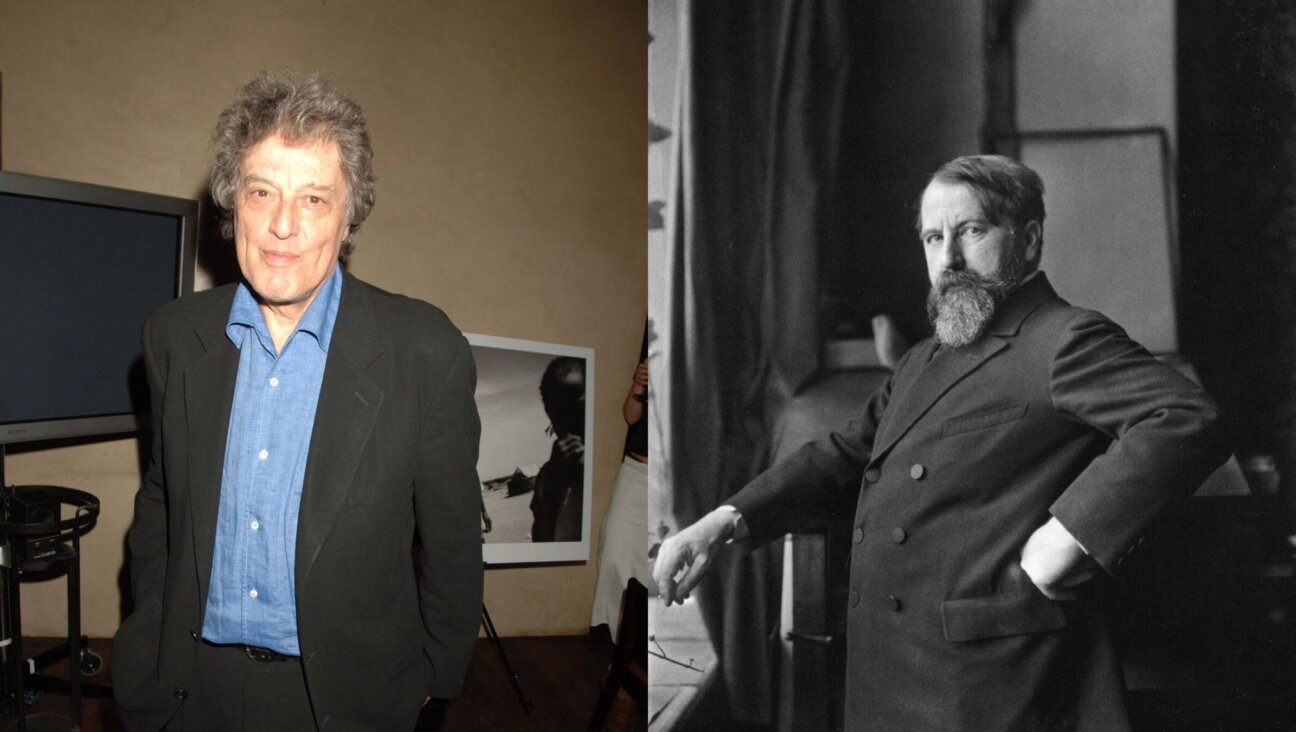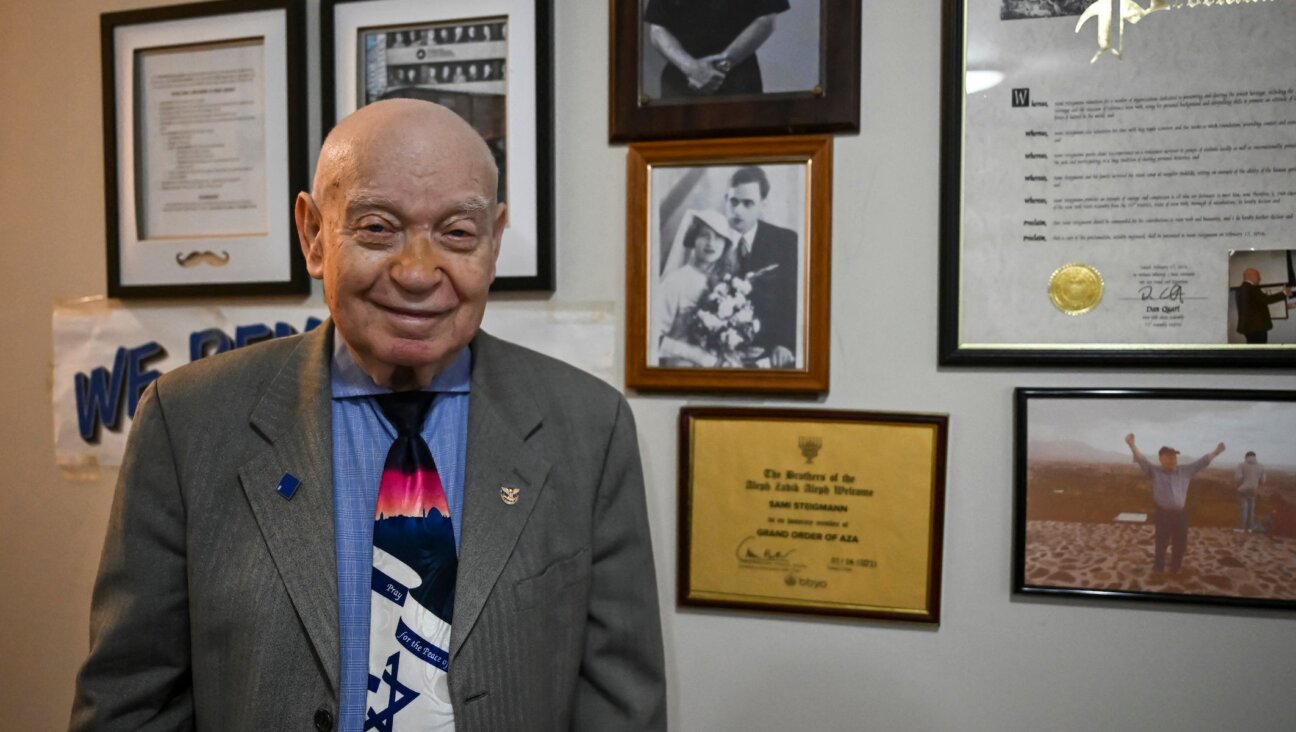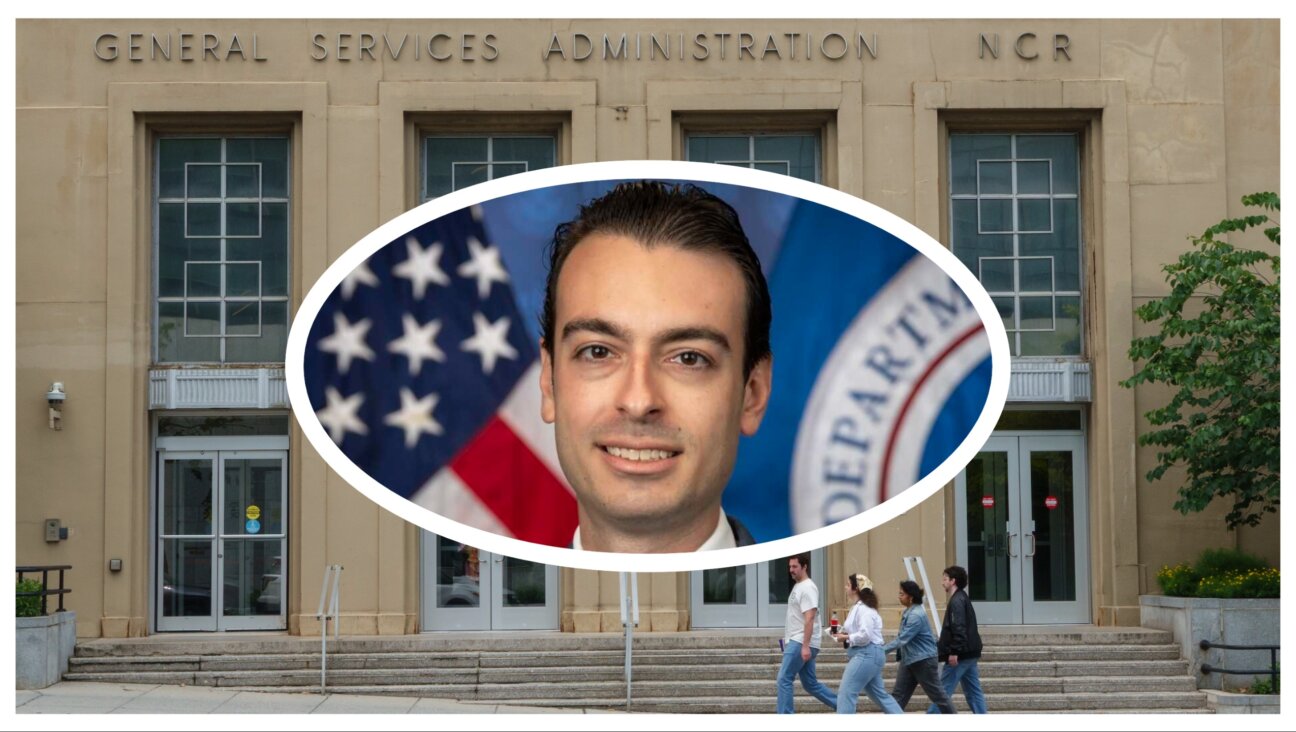Going Home Again
After a year of exhibits, lectures and articles to commemorate the 350th anniversary of the arrival of America’s first Jewish community, the themes from New York’s Center for Jewish History’s exhibit “Greetings From Home: 350 Years of American Jewish Life,” may feel familiar. The exhibit, a joint project of the American Jewish Historical Society in cooperation with Yeshiva University Museum and the American Sephardi Federation with Sephardic House, offers a competent summation of the American-Jewish experience in the form of a highlights tour: a peddler’s license issued in 1787 by Benjamin Franklin to one of America’s first Jews; an undated “Rules of the Shul” sign instructing immigrant worshippers in synagogue decorum; a 1980s vegetarian “Hagaddah for the Liberated Lamb.” There are heroic figures, the familiar tropes of antisemitism (a 1947 letter from Maryland College for Women informs an applicant, “Our Jewish quota has been filled”) and, toward the end, the triumph of religious pluralism in a final panel of recent weddings, ranging from Hasidic to same sex.
One of the most evocative parts of the exhibit, though, may be the title itself: “Greetings From Home,” the exhibition brochure tells us, refers to the “dialectical relationship” between American Jews and the communities they left. The signature image of the exhibit comes from a poster for a Yiddish play of the same name, which was performed in Chicago in 1926 at Glickman’s Palace Theater. In the background of the graphic blue-and-white drawing, headed away from the Statue of Liberty, is a steamship bound for Europe. In the foreground, the frame is split between the Jews in Europe, with their pained expressions and broken-down chairs, and the American Jews, well clothed and comfortable. The Americans are receiving a letter from the old country, and it is unclear that “greetings” is the right word for the news they will read.
From the 1880s through the 1920s, 2.5 million Jews immigrated to America, out of a total of 25 million Europeans who moved across the Atlantic during that time. To an unprecedented degree, the Jews were here to stay. Between 1908 and 1914, the rate of return migration for Jews was a mere 7%, as compared to nearly one-third of non-Jews, according to Jonathan D. Sarna’s “American Judaism: A History.” Women and children represented a much higher percentage of Jewish immigrants than non-Jewish immigrants, which also suggests that Jews were uniquely determined to stay.
The cliché, of course, is “You can never go home again,” but in 1929, Peysakh Zuckerman, a well-to-do New York Jew from Kobuszowa (today known as Kolbeshev), in Poland, did just that. Such visits were not unheard of in Zuckerman’s day, and he took along a newsreel cameraman so that on his return to New York, he could show the footage to fellow members of the United Kolbeshever Relief Organization, one of the many landsmanshaftn, or hometown societies, that sprung up in the late 1800s to fund charitable ventures back home. Two hundred members contributed a total of $4,500.
The two-minute clip included in “Greetings From Home” is captivating: In one small moment, the old and the new worlds are back together again, and the viewer is looking through Zuckerman’s eyes at the home he has left. At the same time, the viewer identifies with both the American visitor and the Polish Jews. The poignancy, of course, is heightened by our knowledge that in just a few short years, this place and these people will be destroyed.
The milky black-and-white footage shows the town square, a bustling space filled with tents, tables, and horses and buggies. The day seems bright and sunny, and the town feels open and breezy. Hands grab loaves of crusty bread, piled high on a table. A man, slumped down with his chin resting in his hand, sits on a wooden box. Women in headscarves hurry about. Sometimes people interact directly with the camera, as when a group of men look solemnly at us before breaking into grins.
Finally, there is a transfixing group of young women, their hair in bobbed waves. Some are wearing pearls; one has a silk scarf knotted around her neck. They are talking and smiling, both at each other and at the camera. One gives a flower to another. A few apply lipstick. From our current vantage point (especially in this moment of retro fashion), these women look astonishingly modern, as if they would blend in on the streets of New York.
The 350th anniversary commemorates not the first Jewish footstep on American soil, but the first Jewish community. The implication is that to be Jewish, one cannot be a voice crying out in the wilderness. It is that concept — community — that is so hard to capture in historical letters or objects, or even in a static photograph. But in the film clip from Poland, the old men, the young boys, the peddlers and the young women are embracing, talking and laughing, like a many-headed moving organism. They are together, and very much at home.
Jennifer Siegel is a staff writer at the Forward.















